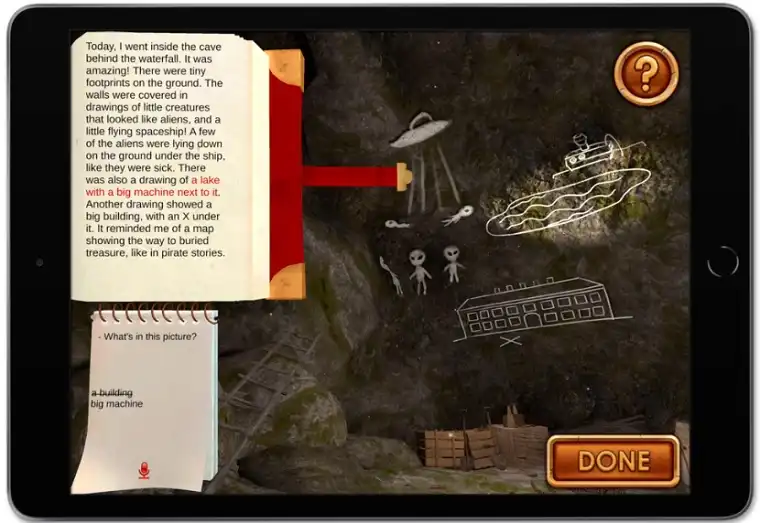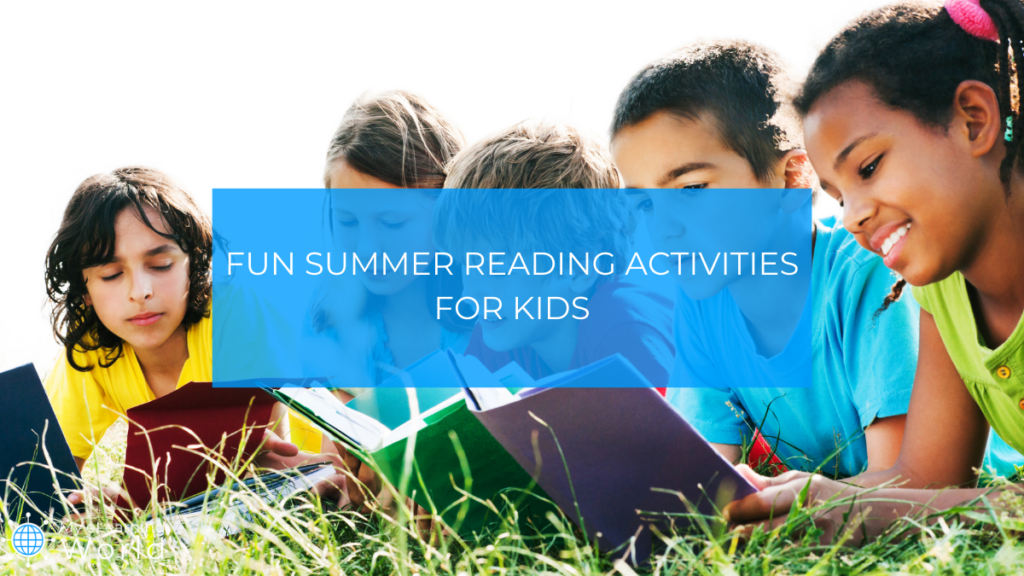What if summer could be a season of thrilling adventures, fascinating discoveries, and endless tales?
Summer is a time for fun, relaxation, and adventure. However, as parents and educators, we often worry about the “summer slide” – the loss of academic skills that can occur during the long break from school. But fret not, because summer can also be an opportunity to engage children in exciting and educational activities that keep their minds sharp and their love for learning alive.
Imagine the joy of diving into captivating books, exploring new worlds, and expanding knowledge while basking in the warm sunshine.
In this article, we’ll unlock the secrets to combating the summer slide through a collection of fun and educational reading activities. With these tips, your kids can not only avoid the summer slide but actually sharpen their reading skills while having a blast!
So, are you ready to embark on a journey where imagination knows no bounds and learning becomes a thrilling summer escapade?
Let’s dive into the world of summer reading activities!
Disclosure: Some of the links in this article are affiliate links, meaning at no additional cost for you, we might get a commission if you click the link and purchase.
7 Summer Reading Activities & Ideas
1. Explore Reading Challenges and Contests
Reading challenges and contests can be a fantastic way to keep children motivated and engaged with reading during the summer break. These activities add an element of fun and competition, making reading a thrilling adventure. Various organizations, libraries, and online platforms offer reading challenges with different themes and goals.
One popular reading challenge is setting a target number of books to read over the summer and keeping track of progress. Children can create a reading log or use online tools to record the titles and authors of the books they have read. It encourages them to read more and helps them reflect on their accomplishments.
Additionally, some reading games and challenges incorporate exciting elements such as themed reading quests or scavenger hunts.
To add a touch of technology and interactive learning to summer reading challenges, platforms like Lou Adventures can be a valuable resource.
Lou Adventures is a free reading app that utilizes technology to enhance children’s learning through fun and delightful games.
With Lou, the talking dog, as their guide, your child will uncover hidden secrets, solve puzzles, and embark on an unforgettable adventure filled with intriguing discoveries.
You can take a minute to visit our Lou Adventures review for a full overview of the app.
 Lou Adventures: An Interactive Learning Story for Kids
Lou Adventures: An Interactive Learning Story for Kids
Lou Adventures is an interactive learning story for kids that helps them improve their reading skills through a fun, adventurous game.
2. Host a Book Club or Reading Circle
Hosting a book club or reading circle during the summer is a fantastic way to keep kids engaged in reading and foster a sense of community. By gathering a group of children who share similar reading interests and setting regular meeting times, you create a dedicated space for literary exploration and discussion.
Encourage the participants to choose books collectively or take turns suggesting titles. It allows for a diverse range of reading materials and ensures that each child can explore their preferred genres or topics. The collaborative process of selecting books also promotes a sense of ownership and investment in the reading experience.
To make the book club sessions more interactive, incorporate creative activities related to the books. For example, encourage the children to act out their favorite scenes, create artwork inspired by the story, or even prepare short presentations about the themes or characters. These activities enhance reading comprehension and allow for hands-on exploration and creative expression.
3. Engage in Outdoor Reading Activities
Engaging in outdoor reading activities during the summer is an excellent way to combine the joy of reading with the beauty of nature and the great outdoors. By encouraging children to take their books outside, you create a unique and refreshing reading experience that stimulates their senses and sparks their imagination.
One idea for outdoor reading is to set up a cozy reading nook in your backyard or a nearby park. Provide comfortable seating options such as blankets, cushions, or outdoor bean bags where children can relax and immerse themselves in their books. Create a tranquil and inviting atmosphere by adding string lights, colorful bunting, or even a small tent for added charm.
Consider organizing a reading picnic or a reading circle in nature. Gather a group of children and head to a picturesque outdoor location where you can spread out blankets or set up picnic tables.
Additionally, you can organize a scavenger hunt with a literary twist. Create a list of book-related items or clues hidden throughout an outdoor space. Children can search for these items while enjoying the thrill of the hunt.
4. Collaborate with Friends for Reading Adventures
Embarking on reading adventures with friends is like diving into a treasure-filled ocean of stories, where imagination knows no bounds and laughter echoes through the pages. When you join forces with your buddies, the world of books becomes a playground of thrilling mysteries, enchanting worlds, and unforgettable characters.
In addition to reading together, consider organizing reading-related activities with friends. For example, you can host a book-themed party where each participant dresses up as a character from their favorite book, and they take turns sharing why they love that particular character. Another idea is to create a book-inspired craft session where children can make bookmarks, design book covers, or create illustrations based on their favorite stories.
Collaborating with friends for reading adventures enhances the enjoyment of reading and promotes social interaction, critical thinking, and communication skills. It encourages children to exchange ideas, broaden their perspectives, and develop a deep appreciation for literature.
5. Journal and Reflect on Reading Experiences
Journaling and reflecting on reading experiences can add a whole new dimension to summer reading activities. Encourage children to keep a reading journal where they can record their thoughts, feelings, and insights about the books they read.
In their reading journal, children can write about their favorite characters, and memorable moments, or even create alternative endings. This process allows them to delve deeper into the stories, make connections with their own lives, and develop critical thinking skills.
Journaling also provides a platform for self-expression, as children can express their opinions, ask questions, and share their perspectives. It fosters a sense of ownership and personal connection to the books they read.
Additionally, journaling can serve as a valuable tool for future reference, allowing children to revisit their reflections and see how their reading tastes and interpretations evolve. It becomes a cherished keepsake of their reading journey, capturing their growth as readers and thinkers.
6. Create a Reading Schedule
Creating a reading schedule is an effective way to prevent the summer slide and maintain a consistent reading routine:
- Set a specific reading time: Determine a time of day that works best for your child’s reading activities. Consistency is important, so choose a time that can be dedicated solely to reading.
- Allocate a dedicated reading space: Create a special reading spot for your child where they can feel comfortable and focused. It could be a cozy corner in their room, a comfortable chair in the living room, or even a blanket fort in the backyard.
- Determine the duration: Decide on the duration of each reading session based on your child’s age and attention span. For younger children, start with shorter sessions, whereas older children can aim for longer reading sessions.
- Plan reading materials: Help your child select a variety of books, magazines, or other reading materials that cater to their interests and reading level.
- Avoid distractions: During the designated reading time, create a distraction-free environment. Minimize distractions such as TV, video games, or mobile devices.
- Track progress with Lou Adventures: Lou Adventures, an interactive reading program for kids, can be a valuable tool to support your child’s summer reading activities. It offers engaging stories, comprehension questions, and progress-tracking features. You can monitor your child’s reading achievements, track their progress through the Parent Dashboard, and celebrate their milestones along the way. Click here to get Lou Adventures for free.
7. Visit the Library
When you visit the library with your child, you open up a world of possibilities. Libraries are treasure troves of books, magazines, and other reading materials that cater to various age groups and interests. Take your child on regular trips to the library and encourage them to explore the shelves, browse different sections, and discover new books.
Libraries often organize summer reading programs designed to motivate children to read during the break. These programs typically include reading challenges, incentives, and rewards for reaching reading goals. Encourage your child to participate in these programs to stay engaged in reading throughout the summer.
Libraries offer more than just physical books. Many libraries have digital resources, audiobooks, e-books, and educational materials available for borrowing. Take advantage of these resources to introduce your child to different formats of reading and enhance their reading experience.
Final Thoughts on Summer Reading Activities
Engaging in fun and educational summer reading activities is a powerful tool to combat the summer slide and keep children motivated to read. These activities help prevent learning loss and foster a lifelong love for reading. They provide opportunities for children to explore new books, develop their reading skills, expand their knowledge, and unleash their creativity.
So, let this summer be a time of imagination, discovery, and growth through the wonderful world of books. Embrace the power of summer reading activities and watch as your child’s reading motivation and skills soar to new heights.


